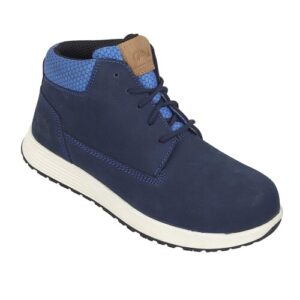Analyzing Market Trends in the Beauty Product Wholesale Industry
Navigating the Competitive Landscape: Strategies for Beauty Product Wholesalers
One of the key aspects of success for wholesalers of beauty products is their ability to analyze market trends effectively. Understanding the ever-changing demands of consumers and the dynamics of the beauty industry is crucial for making informed business decisions.
By keeping a close eye on market trends, wholesalers of beauty products can position themselves to capitalize on emerging opportunities and stay ahead of the competition. This involves monitoring shifts in consumer preferences, tracking the popularity of new ingredients and formulations, and staying attuned to the latest beauty industry innovations.
For more insights into the world of wholesalers of beauty products, visit wholesalers of beauty products.
Analyzing Market Trends in the Beauty Product Wholesale Industry
Successfully navigating the competitive landscape in the beauty product wholesale industry requires a keen understanding of market trends. Analyzing market trends is essential for wholesalers to stay ahead in this dynamic and fast-paced industry. By closely monitoring consumer preferences, emerging brands, and technological advancements, beauty product wholesalers can identify and capitalize on opportunities for growth.
One key market trend in the beauty product wholesale industry is the increasing demand for natural and organic products. Consumers are becoming more conscious of the ingredients in the products they use, leading to a surge in the popularity of natural and organic beauty products. Wholesalers need to adapt to this trend by sourcing and offering a diverse range of natural and organic beauty products to meet the growing consumer demand.
Another important trend to analyze is the impact of e-commerce on the wholesale industry. With the rise of online shopping, beauty product wholesalers must optimize their digital presence and distribution channels to effectively reach and engage customers. Embracing e-commerce platforms and digital marketing strategies can enhance the reach and visibility of wholesale beauty products in the competitive market landscape.
Furthermore, the beauty industry is heavily influenced by seasonal trends and social media. Wholesalers need to stay attuned to seasonal variations in product demand and leverage social media platforms to gain insights into popular beauty trends. By staying proactive and adaptive to evolving market trends, beauty product wholesalers can position themselves for sustained success in the competitive landscape.
Leveraging Technology for Competitive Advantage in Beauty Product Wholesale
As the beauty product wholesale industry continues to grow and evolve, wholesalers are constantly seeking ways to gain a competitive edge. In today’s market, leveraging technology is essential for staying ahead of the competition and meeting the evolving needs of retailers and consumers. Beauty product wholesalers can harness the power of technology in various ways to streamline operations, improve customer service, and drive sales.
One way wholesalers can leverage technology for a competitive advantage is by implementing advanced inventory management systems. These systems not only help in tracking product availability and managing stock levels but also provide valuable data insights that can inform purchasing decisions and inventory optimization. By utilizing sophisticated inventory management software, wholesalers can reduce stockouts, minimize overstocking, and ensure that popular products are always in supply.
In addition to inventory management, wholesalers can also utilize technology to enhance the ordering process for their clients. Implementing user-friendly online ordering platforms and mobile applications can make it easier for retailers to browse products, place orders, and manage their accounts. By providing a seamless and efficient ordering experience, wholesalers can strengthen their relationships with retailers and differentiate themselves in the market.
Furthermore, leveraging technology can also enable wholesalers to analyze sales data, track market trends, and forecast demand more accurately. This allows them to identify emerging opportunities, anticipate shifts in consumer preferences, and proactively adapt their product offerings. By staying ahead of trends and understanding the market landscape, beauty product wholesalers can position themselves as strategic partners to retailers, offering valuable insights and innovative products that resonate with consumers.
Ultimately, in an increasingly competitive beauty product wholesale landscape, embracing technology is not just a choice but a necessity for wholesalers looking to thrive. By leveraging technology for streamlined operations, enhanced customer service, and informed decision-making, beauty product wholesalers can position themselves for sustained success in this dynamic industry.
Building and Diversifying Distribution Networks in the Beauty Product Wholesale Business
Building and diversifying distribution networks is crucial for beauty product wholesalers looking to navigate the competitive landscape of the industry. With the ever-evolving consumer preferences and the emergence of new beauty trends, wholesalers need to adapt and expand their distribution channels to stay ahead of the competition.
One effective strategy for wholesalers is to establish strong relationships with a diverse range of retailers, including department stores, specialty beauty shops, online marketplaces, and salons. This not only increases the reach of the products but also provides resilience against market fluctuations in any one sector. By diversifying the distribution network, wholesalers can access a broader customer base and capitalize on varying purchasing behaviors.
Additionally, leveraging technology to optimize distribution is essential in the modern beauty product wholesale business. Utilizing e-commerce platforms, implementing efficient order fulfillment systems, and employing data-driven analytics can enhance the distribution network’s effectiveness. This tech-savvy approach enables wholesalers to reach customers directly and streamline the supply chain, ultimately improving the overall distribution process.
Furthermore, exploring partnerships with influencers and beauty professionals can open up new avenues for distributing products. Collaborating with makeup artists, skincare experts, and social media influencers can generate buzz and drive sales through their dedicated followers. This strategy not only diversifies the distribution network but also leverages the credibility and authority of industry influencers to boost product visibility.
In conclusion, building and diversifying distribution networks is a multifaceted strategy that demands proactive engagement with various retail channels, adoption of technology-driven solutions, and cultivation of partnerships within the beauty industry. Wholesale businesses that effectively navigate and expand their distribution networks are better positioned to thrive in the competitive landscape of the beauty product industry.
Adapting to Consumer Preferences: Competitive Strategies for Beauty Product Wholesalers
Adapting to consumer preferences is crucial for beauty product wholesalers to stay competitive in the ever-changing market. With the beauty industry constantly evolving, wholesalers must be proactive in understanding and responding to the shifting demands of consumers. One effective strategy is to conduct thorough market research to identify emerging trends and preferences in beauty products.
Moreover, wholesalers can enhance their competitiveness by diversifying their product offerings to cater to a wide range of consumer preferences. This can involve introducing new lines of products that align with popular trends, such as organic, sustainable, or cruelty-free beauty products. By staying attuned to consumer preferences, wholesalers can position themselves as industry leaders and stay ahead of the competition.
Additionally, leveraging customer data and feedback is essential for wholesalers to adapt their strategies to meet consumer demands. Collecting and analyzing data on purchasing patterns, customer feedback, and demographic trends can provide valuable insights for wholesalers to refine their product offerings and marketing strategies. This data-driven approach enables wholesalers to tailor their business to align with consumer preferences, ultimately boosting their competitiveness in the market.
In conclusion, beauty product wholesalers need to continuously adapt to evolving consumer preferences in order to thrive in the competitive landscape. By staying abreast of trends, diversifying product offerings, and leveraging consumer data, wholesalers can effectively differentiate themselves and meet the dynamic demands of the beauty market.




















